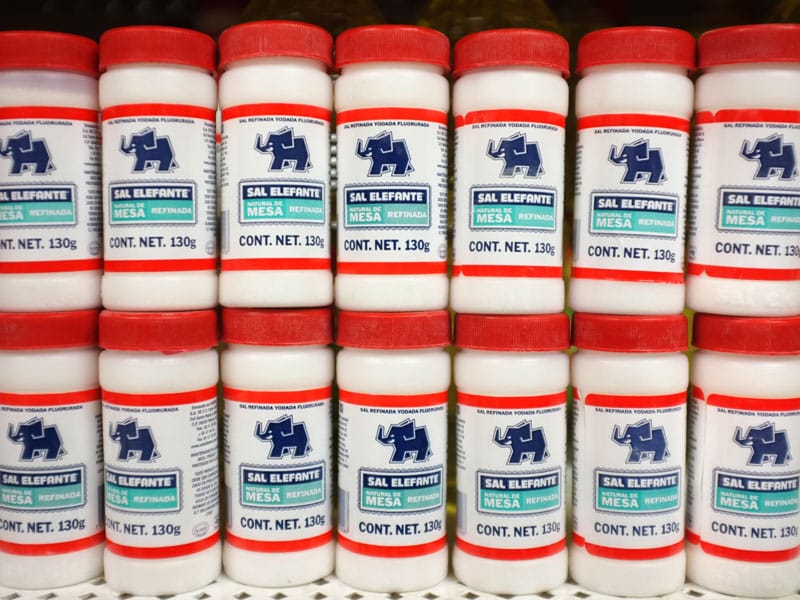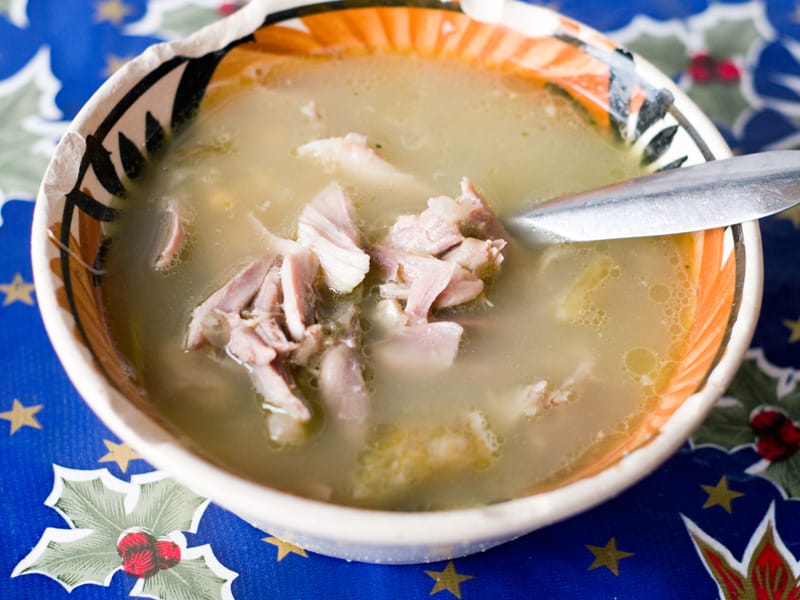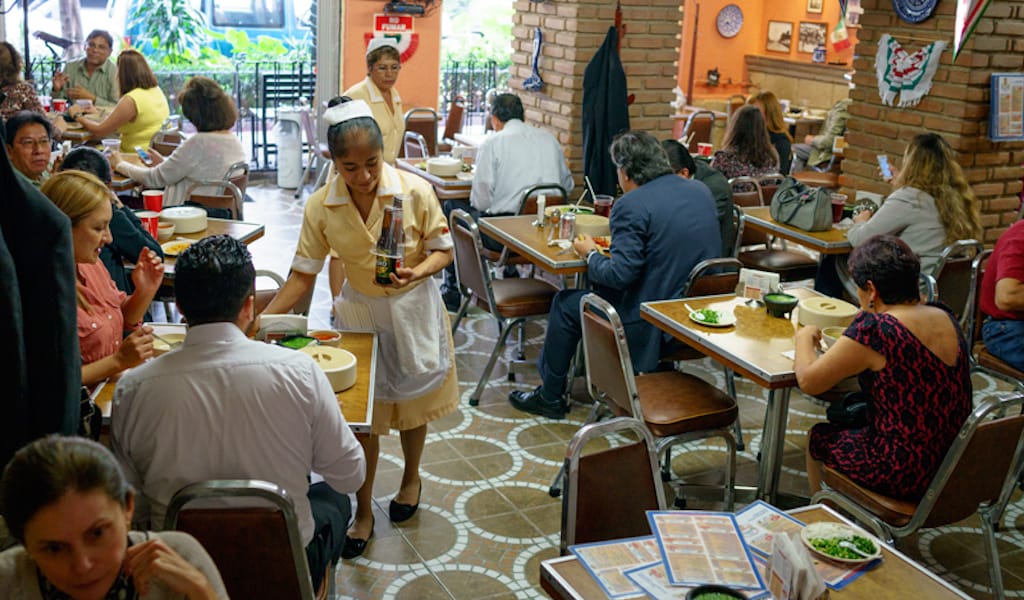Mexican dishes are known for their bold flavor combinations, from complex mole sauces that incorporate ingredients as diverse as chilies and dark chocolate to the multiple different food items and seasonings that go into an authentic pozole. But an equally key element in Mexican food culture is that most basic of flavorings: salt. From savory dishes to fruit and candy to alcoholic beverages, Mexicans have a taste for – and a habit of – pairing salt with almost everything.
Now, with Mexicans’ per capita consumption of salt hovering somewhere around 10,000 milligrams per day – roughly three times that of their American neighbors to the north – and rates of hypertension, obesity and related health problems skyrocketing, officials in the Mexican capital have initiated a campaign aimed at reducing sodium consumption. A recent Associated Press article has the story:
Mexico City Health Secretary Armando Ahued launched a campaign, dubbed “Less Salt, More Health,” late last week to get restaurants to take salt shakers off their tables. Officials and the city’s restaurant chamber signed an agreement to encourage eateries to provide shakers only if guests ask for them. The program is voluntary but the chamber is urging its members to comply.
While this might seem like a small step for combatting a looming public health crisis, Mexicans’ “salt tooth” is deeply ingrained and the essential mineral has had an important place in the culture since pre-Hispanic times. “We even have a saying, échale tantita sal (‘put a little bit of salt on it’), which means to make something, like a story, more colorful, or for a person to make him or herself more gracious or likeable,” comments Culinary Backstreets’ Mexico City correspondent Ben Herrera. As an example of Mexicans’ preference for salt and for mixing savory, spicy, sweet and salty flavors, he mentions a favorite local snack (pictured at right): chapulines, or grasshoppers, toasted in chili and salt and served with salty guacamole atop a tortilla chip that has also been salted.

The AP likewise describes the ubiquity of salt in the Mexican culinary pantheon:
Mexicans’ taste for salt begins at a young age, with children savoring tamarind or dried mango candy coated with chili powder and salt. Vendors hover outside schools selling potato and banana chips, offering to sprinkle a salt-and-chili mixture on top. Chamoyada paste and Valentina sauce are put on fruits and snacks almost by habit.
As for the “Menos sal, más Salud” campaign, unfortunately, our correspondent has low hopes. “I’m familiar with this initiative but, personally, I don’t think it’s going to work. One of the main problems is that most initiatives in the city don’t have the proper follow-through. Countless great ideas have been abandoned for this reason,” he notes. “But the bigger issue is that people are used to eating salt in so many other ways that taking the shakers off restaurant tables won’t make a big difference. Salt comes in salsas, chili powder mixes, sweets, drinks, etc. We don’t need to ask for more salt when it has already been added.” Against such a vast sea of salt, the disappearance of a few salt dispensers would seem to be no more than a drop in the bucket.
The full Associated Press story on the campaign against salt in Mexico City is here.
Published on April 22, 2013
Related stories
April 18, 2024
Trips-Page-TestMexico City has a complex and fascinating cultural identity: it is a place where pre-Hispanic, Colonial, and contemporary influences collide in a riot of street food, and bustling markets. Here, the Aztec ruins of the city aren’t just buried under the surface, they become a backdrop to a thriving, ever-changing metropolis, a microcosm of many…
January 16, 2024
Mexico CityCaldos de Gallina Luis – which a friend had been raving about to us for months before we finally made it there – is essentially a street food stand that has been trussed up to look more like a sidewalk café. Just a short walk from the Insurgentes metro stop, the venue is located on…
February 23, 2023
Mexico CityIn a town that runs on tacos, tacos de guisado may be the most ubiquitous version of the iconic dish in Mexico City. They can be found almost anywhere in the city, from specialty restaurants to markets, tianguis and street vendors selling them at stalls or even out of the trunk of a car. It…

















































































